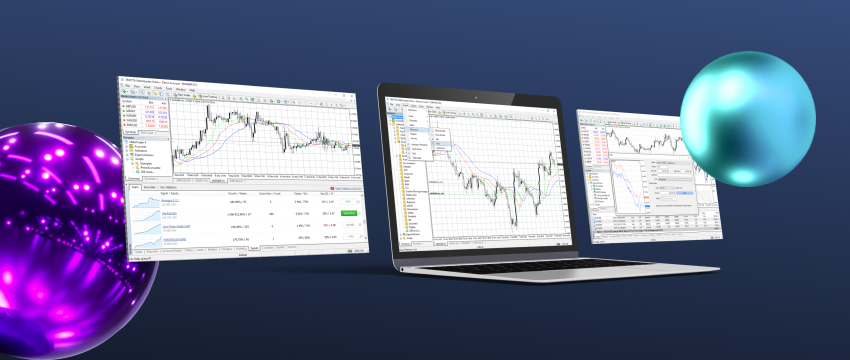One of the most debated questions in trading is which type of analysis, fundamental or technical, is the most appropriate approach. Traders and financial experts are often strongly opinionated regarding which approach leads to potentially better results.
Some believe that understanding an asset’s economic and financial fundamentals is the only way to make informed trading decisions. Others argue that chart patterns as well as market behaviour tell you all you need to know.
In fact, both fundamental and technical analysis have their advantages and disadvantages. There is no perfect method, as each suits different traders based on their needs, goals, timeframe, and risk tolerance.
This article examines the meaning of fundamental and technical analysis, outlines their key differences, strengths, and weaknesses, and explains how traders combine them to balance their strategies.
By the end, you should clearly understand which approach suits your trading style or whether combining both is the better option.
What is fundamental analysis?
Fundamental analysis is about the bigger picture, and it studies what drives an asset’s value. When it comes to stocks, this can mean studying company earnings, balance sheets, management decisions or industry outlooks.
For forex currencies, this might involve keeping track of interest rates, inflation, employment data or economic growth in general. Supply and demand and geopolitical events have an impact on commodities, too.
Fundamental analysis focuses on determining whether an asset is undervalued or overvalued based on its true or intrinsic value. For example, imagine a shop selling shoes worth $70 but they are on sale for $50. The buyer would see this as a good buying opportunity.
Longer-term traders prefer fundamental analysis because it focuses on growth and stability instead of short-term price changes.
What is technical analysis?
Technical analysis, on the other hand, is something different. It is different in that it focuses on price movements, chart patterns, and market trends rather than underlying fundamentals.
Technical analysis relies on historical data and statistical indicators. It assumes that all relevant information is already reflected in the price and that market behavior tends to repeat over time.
In this approach, traders examine price charts and market patterns. They also use indicators such as moving averages, support and resistance levels, or oscillators like the Relative Strength Index (RSI).
Technical analysis revolves around one main idea. It holds that the current market price of an asset already reflects all available information.
This includes company performance, economic data, political events, and investor sentiment. This means that traders can look at price movements, spot trends or try to speculate on the market’s next move.
Short-term traders, such as swing or day traders, use technical analysis because they must react quickly to price changes. Waiting for company reports or economic news releases would take too long. That’s why they rely on charts to decide when to buy or sell.

Why use fundamental analysis?
Fundamental analysis’ biggest strength is its ability to provide a thorough understanding of the real value of an asset. When studying the financial health of a company or a country’s economic stability, traders can decide based on facts instead of short-term info.
During market panics, for instance, prices may decrease to a point below fair value. A well-informed fundamental trader can capitalize on this by buying strong assets at a discount and holding them until the market recovers.
Also, fundamental analysis is useful in planning for the long term. It enables traders to build a portfolio that is steadily growing over the years. It is not so much about guessing tomorrow’s price but rather about spotting companies or currencies that will stay strong in the long term.
Why use technical analysis?
If you are looking for flexibility and speed, then technical analysis is the right type of analysis for you. Fundamental traders look at chart patterns to make decisions fast, without the need to wait for quarterly reports or updates on the economy.
This type of analysis also provides risk-management tools. Stop-loss levels, moving averages or trend lines are indicators that help traders set clear exit and entry points. Having this discipline helps when there is market volatility, where prices are changing fast.
Traders can apply technical analysis universally to different instruments such as stocks, forex, and commodities. Its main focus is price action, as already discussed. Therefore, traders apply the same principles regardless of the asset they trade.
Limitations of fundamental & technical analysis
There might be strengths in both types of analysis but there are also weaknesses. Fundamental analysis is reflected in the market pretty slowly. It may take months or even years for an undervalued company to reach its fair value.
This can cause frustration to traders who are looking to generate revenue as fast as possible. It also depends a lot on assumptions and speculations, which might sometimes be inaccurate.
On the other hand, many traders consider technical analysis to rely too heavily on patterns that may not repeat. The fact that a stock had previously followed a trend doesn’t mean that the same will apply in the future. Some even believe that technical indicators sometimes produce conflicting signals, which can confuse traders.
Fundamental & technical analysis: Summary of differences
The two types of analysis differ in their main focus. As already mentioned, fundamental analysis looks at the reasons why an asset should be worth a certain amount, whereas technical analysis looks at the time to enter or exit a trade based on price action.
Below we summarise their three main differences:
- Timeframe: Fundamental analysis works better for long-term trading. Technical analysis is mostly used by short-term traders.
- Data used: Economic & financial data is used in fundamental analysis while technical analysis involves charts and indicators.
- Decisions made: Fundamentals decide on whether an asset is undervalued or overvalued, while technicals focus on market timing.
Although the two types of market analysis seem to be totally different, they can also be blended for a more complete picture.

Can you use fundamental & technical analysis together?
There are a lot of experienced traders out there that believe that the best approach is to combine both fundamental and technical analysis. Doing so, they can get the most of both analyses’ strengths.
A trader might use fundamental analysis to find a strong company with good prospect for growth. But they can also use technical analysis to decide on the best time to enter the trade, after looking for a favourable chart pattern.
When trading in the forex market, traders might seek interest rate policies to choose which currencies to trade while also analysing charts to find entry and exit levels relying, therefore, on multiple sources of information.
Final thoughts
There is a huge debate going on over the years between fundamental and technical analysis. Although both have their strengths and weaknesses as well as their supporters, it is important to remember that both are simply tools.
Fundamental analysis provides a long-term perspective while helping traders understand an asset’s real value, whereas technical analysis focuses on timing and short-term opportunities.
The choice between the two will depend on your trading goals. However, many traders find that combining both approaches creates a more balanced and informed strategy.
In the end, it is not about which method wins, but rather which method helps you make better decisions. Whichever it is, growth comes with practice, discipline and consistency.
免责声明: This material is for general informational and educational purposes only and should not be considered investment advice or an investment recommendation. T4Trade is not responsible for any data provided by third parties referenced or hyperlinked in this communication.




